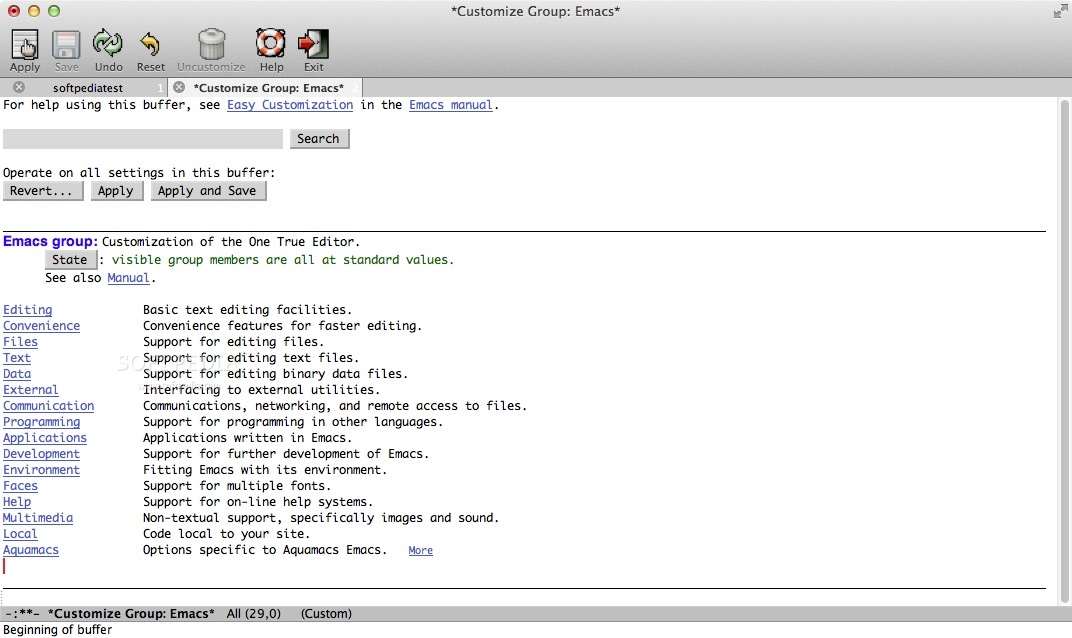

- #Aquamacs tutorial for free#
- #Aquamacs tutorial how to#
- #Aquamacs tutorial for mac#
- #Aquamacs tutorial install#

Find the files and do "mv Makefile.txt Makefile". The best way to fix this is from a Terminal windows. The Mac sometimes hides the extensions on files so the filename on the screen may be Makefile but it's really Makefile.txt. The "Makefile" has to be named just that. PROGRAMMER = -c arduino -b 115200 -P /dev/cu.usbmodem* As long as there is only one Arduino plugged into a USB port on the system this method should work fine.Įdit the "PROGRAMMER" line in the Makefile to have the correct device name just after the "-P".


To avoid having to check the name each time and keep modifying the Makefile, replace the characters in the device name that may change with the '*' wild card character so the name will match anything that starts with "/dev/cu.usbmodem". On the Mac, the first part of the name "/dev/cu.usbmodem" remains the same but the characters after that ("141301") may change. While this device name can be used as is, it's very possible that the name will change the next time the Arduino is plugged in. Now there are two files, and the new one "/dev/cu.usbmodem141301" must be the one for the Arduino. Now plug the Arduino into a USB port and repeat the above search to find any differences in the list. In this case it found one file which must belong to some other device. With the Arduino not plugged into the system, open a Terminal window and get a list of all the files in the /dev directory that start with "cu.usb" So it's usually necessary to look for it at least once to find the correct name. Unfortunately, the name of the device file can change depending on system's hardware and the OS being used. On Mac, Linux and other Unix-like systems, the USB interface is represented by a device file in the "/dev" directory, and the name of that file has to be listed on a line in the Makefile used to build and download the data. The program that downloads the binary data to the Arduino ("avrdude") needs to be told the name of the USB interface to use when contacting the Arduino. Start reading it and follow the instructions. This will load a tutorial file into the editor. That's an Escape, an 'x', then the string "help-with-tutorial" followed by a return key. Then type "ESC x help-with-tutorial Return". This will start the editor and put some up an empty window.
#Aquamacs tutorial how to#
If you want to learn how to use the Emacs text editor, open a Terminal window and enter the command "emacs" by itself.
#Aquamacs tutorial for free#
BBEdit - This is a GUI text editor that can be purchased for $50, or used for free with slightly less features enabled.Visual Studio Code editor - This is a free GUI-based text editor that we currently recommend for students to use.The following are links to text editors that Mac users may find useful.
#Aquamacs tutorial install#
It should not be necessary to also install Apple's Xcode development software but if it is installed (or installed later) it should not affect the AVR toolchain.
#Aquamacs tutorial for mac#
Instructions for installing an AVR toolchain for Mac is available on this web page. The following is to help students install a workable AVR toolchain suite on the own computers.


 0 kommentar(er)
0 kommentar(er)
